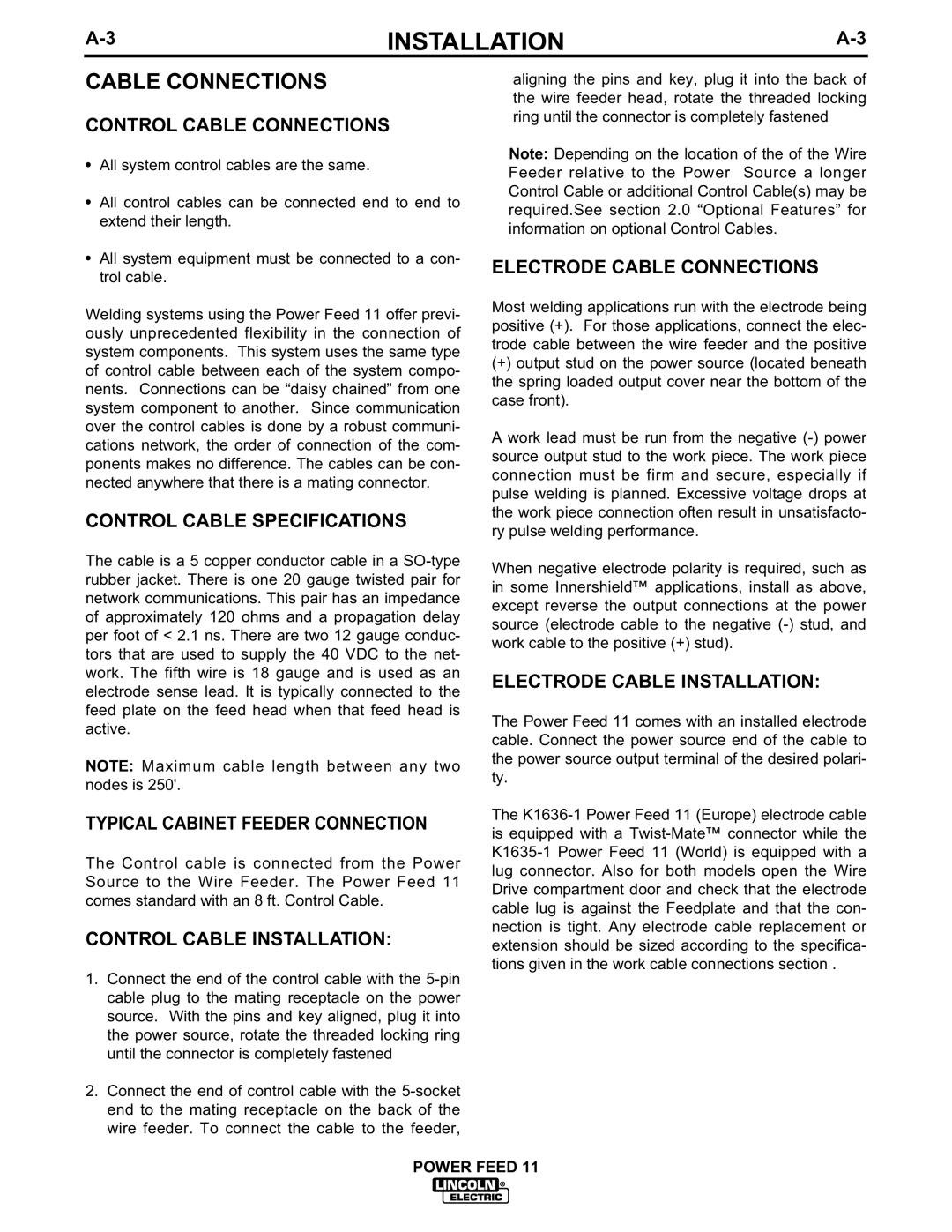INSTALLATION | ||
|
|
|
CABLE CONNECTIONS
CONTROL CABLE CONNECTIONS
•All system control cables are the same.
•All control cables can be connected end to end to extend their length.
•All system equipment must be connected to a con- trol cable.
Welding systems using the Power Feed 11 offer previ- ously unprecedented flexibility in the connection of system components. This system uses the same type of control cable between each of the system compo- nents. Connections can be “daisy chained” from one system component to another. Since communication over the control cables is done by a robust communi- cations network, the order of connection of the com- ponents makes no difference. The cables can be con- nected anywhere that there is a mating connector.
CONTROL CABLE SPECIFICATIONS
The cable is a 5 copper conductor cable in a
NOTE: Maximum cable length between any two nodes is 250'.
TYPICAL CABINET FEEDER CONNECTION
The Control cable is connected from the Power Source to the Wire Feeder. The Power Feed 11 comes standard with an 8 ft. Control Cable.
CONTROL CABLE INSTALLATION:
1.Connect the end of the control cable with the
2.Connect the end of control cable with the
aligning the pins and key, plug it into the back of the wire feeder head, rotate the threaded locking ring until the connector is completely fastened
Note: Depending on the location of the of the Wire Feeder relative to the Power Source a longer Control Cable or additional Control Cable(s) may be required.See section 2.0 “Optional Features” for information on optional Control Cables.
ELECTRODE CABLE CONNECTIONS
Most welding applications run with the electrode being positive (+). For those applications, connect the elec- trode cable between the wire feeder and the positive
(+)output stud on the power source (located beneath the spring loaded output cover near the bottom of the case front).
A work lead must be run from the negative
When negative electrode polarity is required, such as in some Innershield™ applications, install as above, except reverse the output connections at the power source (electrode cable to the negative
ELECTRODE CABLE INSTALLATION:
The Power Feed 11 comes with an installed electrode cable. Connect the power source end of the cable to the power source output terminal of the desired polari- ty.
The
